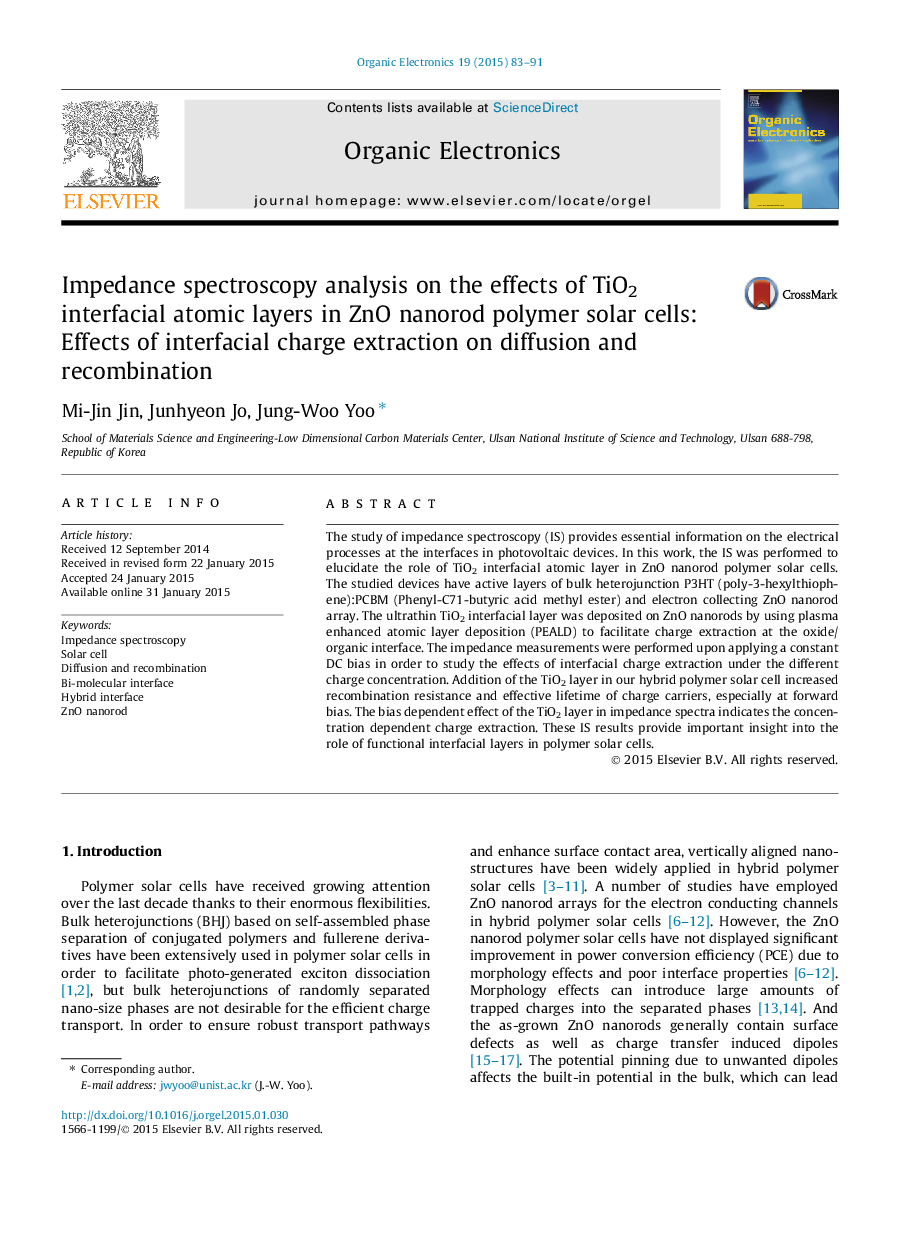| Article ID | Journal | Published Year | Pages | File Type |
|---|---|---|---|---|
| 1266942 | Organic Electronics | 2015 | 9 Pages |
•Impedance spectroscopy was studied for interface affects in hybrid polymer solar cell.•Both RC and RCPE models were employed for the analysis of interface effects.•The charge extraction function of interfacial layer was demonstrated via IS analysis.•Effects of interfacial charge extraction on diffusion and recombination were shown.
The study of impedance spectroscopy (IS) provides essential information on the electrical processes at the interfaces in photovoltaic devices. In this work, the IS was performed to elucidate the role of TiO2 interfacial atomic layer in ZnO nanorod polymer solar cells. The studied devices have active layers of bulk heterojunction P3HT (poly-3-hexylthiophene):PCBM (Phenyl-C71-butyric acid methyl ester) and electron collecting ZnO nanorod array. The ultrathin TiO2 interfacial layer was deposited on ZnO nanorods by using plasma enhanced atomic layer deposition (PEALD) to facilitate charge extraction at the oxide/organic interface. The impedance measurements were performed upon applying a constant DC bias in order to study the effects of interfacial charge extraction under the different charge concentration. Addition of the TiO2 layer in our hybrid polymer solar cell increased recombination resistance and effective lifetime of charge carriers, especially at forward bias. The bias dependent effect of the TiO2 layer in impedance spectra indicates the concentration dependent charge extraction. These IS results provide important insight into the role of functional interfacial layers in polymer solar cells.
Graphical abstractFigure optionsDownload full-size imageDownload as PowerPoint slide
